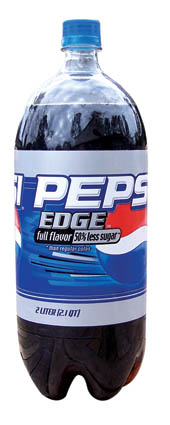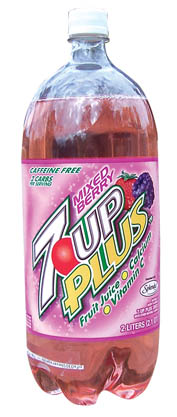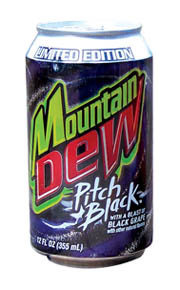
Beverages faced a number of health concerns in 2004. Researchers at the University of Maryland (Baltimore) demonstrated that non-colas, canned iced teas and even diet drinks can weaken and erode tooth enamel, but that would be just one of the few pieces of bad news for the tea segment during the year. While a number of studies touted the physical benefits of tea consumption, Starbucks (Seattle) debuted a variety pack of Tazo teas as remedies for life's emotional troubles. Visions of Tazo included three vials of loose-leaf tea, one of which was an herbal tea referred to as Calm. Interestingly, the three varieties were to be used together, one spoonful of each.

Green Light
A study in Australia found that green tea has dramatic benefits for women with ovarian cancer. Curtin University of Technology (Perth, Australia) examined 254 Chinese women with the disease and found that women who drank green tea had half the risk of dying of the cancer than non-tea drinkers. The researchers suggested consuming at least one cup of green tea a day, which undoubtedly came as welcome news to Healthy Beverage Company (Newtown, Pa.). The company launched Steaz Green Tea Soda in 2003 and, in 2004, expanded the line with organic varieties of cola, raspberry, lemon dew, orange, key lime and root beer, each bottle providing 20% of the daily value (DV) of vitamin C and 50% of vitamin A. The year proved a burgeoning one for the small company, as sales grew from 130,000 cases to about 170,000 nationwide, which has the company aiming for 550,000 cases in 2005.This is not to say that green tea was solely the domain of one company. Republic of Tea (Novato, Calif.) added a variety of flavors to the beverage in a range of products to benefit breast cancer research. The line included Pink Lemonade Green Tea, Pink Lady Apple Green Tea, Pink Rose Green Tea and Pink Grapefruit Decaf Green Tea.
If tea alone were not healthful enough, Ocean Spray Cranberries (Lakeville-Middleboro, Mass.) afforded consumers a blend of juice and tea. The four flavors are Cranberry, Wildberry, White Cranberry & Peach, and Diet Wildberry. The latter was the company's first diet endeavor, containing 10 calories and 3g of carbohydrates per 8oz. and an “innovative sweetening system,” which the label attributes to aspartame, sucralose, acesulfame potassium, and a number of juices from concentrate.
Juices' healthful qualities may seem clear but, in the year of low-carb, juices could be made even more healthful. Old Orchard Brands (Sparta, Mich.) took up the cause with LoCarb Fruit Juices. Promising 75% less sugar, carbohydrates and calories than other fruit juices, flavors included apple, apple kiwi strawberry, apple cranberry, apple raspberry and grape.
For Grown-ups
While juice boxes have proven vital for parents attempting to get their children to drink healthier beverages, Ocean Spray decided to capitalize on the convenient aspects of the juice box and introduce a grown-up Fruit Punch To-Go six-pack. Each serving offers 100% of the DV of vitamin C.Some of the category's biggest business news in 2004 was in the alcoholic segment, with the possible merger of Molson Inc. (Toronto) and Coors Brewing Co. (Golden, Colo.). Approval of the deal is still pending; rumors have swirled for months that members of either controlling family may move to block the merger. However, if and when the two do merge, the company would be the world's fifth-largest brewing company by volume.
Researchers at the University of Western Ontario (London, Ontario) found that one drink of beer or wine provides equivalent increases in plasma antioxidant activity, leading the scientists to speculate that either may reduce the risk of “aging diseases” such as cancer, diabetes, heart disease and cataracts.
Of course, in 2004, healthful seemed synonymous with lower carbohydrate content, and new beer introductions were no exception: Anheuser-Busch (St. Louis) revamped Natural Light and introduced Bud Select; Coors added new packaging for its low-carb Aspen Edge; Binding USA (Norwalk, Conn.) imported DAB Low Carb Beer from Germany; and Interbrew debuted Labatt Select Low Carb Light Beer.
By the end of the year, however, the low-carb phenomenon had entered its decline, a fate shared by the last, glowing embers of “malternatives.” Once a robust portion of the alcoholic beverages segment, only 13 new flavored alcoholic beverage (FAB) products debuted in 2004, according to Mintel International's Global New Products Database (GNPD, Chicago). Coors did relaunch its Zima malternative as Zima XXX in hard black cherry, hard orange and hard lemon flavors, which boasted 5.9% alcohol by volume (ABV), compared with the 4% to 5% of other malt beverages and beer.
Meanwhile, SKYY (San Francisco) Melon Vodka was a blend of honeydew, cantaloupe and watermelon flavors, and the company expanded its partnership with Miller Brewing (SABMiller, London) to launch SKYY Sport. This flavored malt beverage has a citrus flavor and “a splash of cranberry,” but only 15g of carbohydrates.
Perhaps the biggest FAB news for the year, though, was a rule change that could have major ramifications. New U.S. Alcohol and Tobacco Tax and Trade Bureau (Washington) regulations require at least 51% of alcohol in the drinks must be the product of brewing and not from distilled spirits flavors added to the drinks. As might be expected, the issue boils down to taxable revenue.
These drinks are created with a malt base, the same process used to brew beer. Beer is taxed at a lower rate than distilled spirits, and at issue is whether flavored malt beverages should be taxed as spirits or beer. The rule allows only half the amount of added spirits flavors found in many flavored malt beverages; drink makers will have one year to change their formulations to comply with the new rule, which takes effect in January 2006.

Energize
In what could spell the next big trend for alcoholic beverages, a number of companies have taken a cue from the popularity of Red Bull (Salzburg, Austria) as a mix-in. In Monaco, Propaganda (Monaco) added guarana to its beer, while Anheuser-Busch already is launching a beer infused with caffeine, guarana and ginseng.Be, pronounced “b to the e,” will be packaged in a 10oz., slim-line can similar to those used with energy beverages. Containing 6.6% ABV, Be also will boast 54mg of caffeine and promises a flavor both lightly “sweet and tart.”
Non-alcoholic energy drinks remained among the hottest trends in the category, as 2004's introductions revealed companies training their focus on particular demographics. Crunk!!! (Crunk LLC, Croton on Hudson, N.Y.), for example, was formulated with ashwaganda, an ingredient cultivated only in India and Africa. The energy drink has a sweet and tart pomegranate flavor with red coloring, promising to support the immune system and provide mental and physical vitality.
Nonetheless, even energy drinks were not immune from the low-carb mentality, as exemplified by Kronik Low-Carb Unrelenting Thermal Energy Supplement. A product of First Choice Distribution (Phoenix), this Kronik product warns that it “may suppress appetite”—somewhat less threatening than the other Kronik offering this year: Kronik Unrelenting Energy Supplement warned that it may be “psychologically addicting.”
This year also saw products promising a libidinous boost, as Sex Kola's carb-free “energy soft drinks” from Zen Bottling (Providence, R.I.) were formulated with the herbal “aphrodisiac” yohimbe and could be found in such descriptive varieties as Discipline Lemon Lime, Lust Lemonade, Randy Root Beer and Scream Orange Cream.
With a somewhat-similar goal, Specialty Spirits LLC (Plainfield, Conn.) launched Gay Fuel Energy Drink, mixing red currant juices, B vitamins and a “secret blend of Brazilian sexual stimulant herbs”; the ingredients legend cites caffeine, guarana extract, lapacho extract, marapuama extract, damiana extract, and ginseng.
One of the biggest energy drink introductions, however, did not hit the market until just after 2005 began. Coca-Cola's (Atlanta) Full Throttle was announced earlier in the year and is a citrus-flavored beverage that should get a rather large advertising push. With any luck, the media push will benefit this Coke launch more than it did the company's major soft drink debut.
C2 debuted over the summer, and the lower-sugar cola contained half the calories and carbohydrates of regular cola, while also being low in sodium. While it may be too early to describe the effort a failure, the product's demise could be in sight. Already, the company has announced the drink will not launch in the U.K., one of its most important and profitable overseas markets.
Coke's low-carb product had roughly the same success as the other major low-carb soft drink launched in the U.S. in 2004. Neither C2 nor PepsiCo's (Purchase, N.Y.) Pepsi Edge garnered much sales success, with C2 accounting for just a 0.4% share of supermarket soft drink sales through October and Pepsi Edge tallying an even more disappointing 0.3%. Like its Atlanta counterpart, Pepsi has no plans to expand its low-carb soft drink into other markets.
Sales news was not much better for lemon-lime offerings in 2004, as sales in the segment slid for the third year in a row, leading manufacturers to focus more intently on their entries. Pepsi, for example, reportedly has changed its philosophy about the brand and is lining up near-nationwide distribution for its Sierra Mist. That success has come largely at the expense of Cadbury Schweppes' (Plano, Texas) 7Up, although that company made a major push in the segment in 2004.
7Up Plus was a carbonated, caffeine-free beverage fortified with calcium and vitamin C, the nation's first fortified carbonated beverage from a major manufacturer. Although it was caffeine-free, the product did differ from its namesake in another way: it had a “splash” of real fruit juice.
Coke's major lemon-lime change happened with its diet offering. After 30 years on the shelf, Diet Sprite became Diet Sprite Zero. The “Zero” moniker could be set to become a staple at Coke; rumor has it that 2005 will see the launch of Coke Zero, a diet cola. Other concepts on the horizon for the giant include a lime-flavored version of Coke and a product referred to as Vault, described as similar to Pepsi's Mountain Dew.
Looking ahead to 2005, rumors are swirling that a sucralose shortage may derail some new products before they even hit store shelves. The sweetener's manufacturer already has informed customers that it cannot keep up with demand and that all shipments would have to be rationed on a monthly basis.
Much of the information in this article was derived from Mintel International's Global New Products Database, www.gnpd.com, 312-932-0400.
Sidebar: Going Global
Though just starting to take off in the U.S., drinkable yogurt is popular around much of the rest of the world, and New Zealand Dairy Foods (Auckland, New Zealand) continued efforts to make the beverages more functional. Its De Winkel brand added two new varieties of yogurt drinks: antioxidant (with blackberry, boysenberry and strawberry) and energizing (with passion fruit, banana, apricot and spirulina).For those seeking the antioxidant benefits of tea, Unilever Bestfoods (Crawley, U.K.) made the beverage more convenient in the U.K. by extending its PG Tips brand into an on-the-go tea. It included a cup with a PG Tips teabag threaded through the top of the cap. Hot water is added to the cup, the cap and heat sleeve are attached and, once the tea is ready to drink, the consumer can pull the teabag up into the cap, where it locks into place to prevent further brewing.
A black tea in Australia went the indulgent route, however. Lipton Cookies & Cream (Unilever, Epping, Australia) black tea is a full-bodied tea blended with cookies and cream flavor, joining a line of products that includes caramel, honeycomb and vanilla versions, with a choc orange variety expected.
While flavored versions of milk-based drinks are popular, Swire Coca-Cola (Hong Kong) introduced Fanta Lactic in two flavors, plain lactic and white grape lactic. These carbonated soft drinks have a milky flavor but, according to the ingredients panel, no milk. The flavorings and thickeners suggest, however, that the product does have a thicker, richer texture than other Fanta varieties.
PHOTOS COURTESY OF MINTEL INTERNATIONAL'S GNPD
